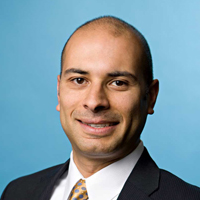Boy has the world changed since 1995! Every aspect of the customer experience from marketing and sales to customer service and support has been turned on its head. Customer experience has changed more in the last 20 years than in the prior 200 years combined. Not surprisingly, this has affected the part of a business whose mission is to engage customers and provide them an experience par excellence: the contact center.
Of course, these abstract “customers” aren’t so abstract; we need only look as far as our own expectations of customer experience to better understand our own customers.
1. We expect to use our own, preferred communication channel.
- In 1983, we expected to be able to call a brand on a toll-free number to talk to a live human.
- In 1993, we expected to be able to email that same brand to get help.
- In 2003, we expected to be able to leverage a website and perhaps online chat capabilities to engage a company.
- In 2013, not only do we expect to be able to engage companies via Twitter, mobile applications, and text messaging, we expect to be able to reach them via any and all of the available channels since 1983: phone/voice, email, chat, social media channels, mobile applications, text messages, and, in six months, a new channel we’re not even yet aware we absolutely need.
This channel explosion will likely continue accelerating over the coming years with an ever-increasing number of concurrent channels expected to be made available in order to provide a world-class customer experience.
2. We want it now.
Gone are the days of calling a contact center and leaving a voice message; in fact, gone are the days of being satisfied with an automated e-mail response letting us know that someone will be reading our email in the next 24 hours and responding back to us. In order to be satisfied, we want a response NOW: I want to have my call answered, my chat responded to, or my tweet addressed.
For a modern contact center, this means a much higher level of staffing preparedness and elasticity in order to be able to respond to the increasingly more dynamic demand of today’s typical workload.
3. We only give you one chance and then explore alternatives.
Remember what it was like changing providers only a couple of decades ago?
- Changing cable TV providers was frequently impossible as in many neighborhoods, there was only one option for a cable TV company. Today, we have countless alternatives to our cable company and all it takes is an unpleasant customer service experience to drive us to exercise that alternative.
- Changing Web hosting providers? There are literally thousands of options out there and the switching costs are truly minimal.
- Software providers? With the advent of the cloud, gone are the days of being “locked in” to a sunk cost on expensive software. Today, we’re able to pick and choose the best vendors who are truly dedicated to our satisfaction; if we’re ever dissatisfied, the software-as-a-service (SaaS) model allows us to quickly change.
For a modern contact center, It’s become absolutely critical to ensure that each and every experience with its customers is a superlative one.
Contact centers are now having to adopt bleeding-edge technologies to satisfy and delight their bleeding-edge customers.



